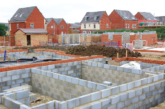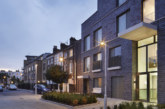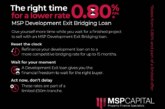
Robert Maas, a Tax Consultant at London accountants CBW believes housebuilders will bear the brunt of SDLT increases.
It’s universally acknowledged that demand for housing has never been greater and isn’t likely to fall away any time soon. This is good news for housebuilders; or is it? Increases in SDLT could turn this opportunity into a poisoned chalice as housebuilders and developers bear the brunt of the 3% surcharge on purchases of second homes and buy-to-let investments that came into effect on 1st April – making it more difficult to sell houses and increasing the cost of development sites.
George Osborne first announced the introduction of the surcharge in December 2015. It increases the SDLT payable on all residential properties costing over £40,000. Even a £125,000 property (previously SDLT free) now attracts a 3% tax rate. The SDLT on a £500,000 house, a fairly average price in London, has doubled from £15,000 to £30,000, so the real cost of the house becomes £530,000. A residential property costing over £500,000 that is bought by a company now attracts an 18% rate on the entire cost.
Slowing demand
Of course, the SDLT is a liability of the purchaser, but an extra £15,000 of SDLT on a £500,000 house is likely to lead to a slowing of demand for new houses as it is likely to inhibit people from moving and potential new entrants to the market will need to find the extra SDLT on top of deposits.
Adding to this, the 3% surcharge it is not limited to second homes. It applies to any residential purchase by a company or discretionary trust and, in many cases to first homes too. Where a property is bought jointly, the 3% applies if any of the joint owners already has an interest in a residence. Miss First-Time-Buyer will find she has to pay the extra 3% if her mortgage provider will not accept a guarantee from Dad unless he has some interest in the property.
Buy to let
Many buy-to-let landlords were already wary of expanding their portfolios as a result of George’s proposed disallowance of loan interest relief, so the 3% surcharge is an added deterrent. It’s unclear to what extent buy-to-let is in competition with owner-occupation; one segment may simply replace the other. However, many off-plan purchases are by buy-to-let landlords, so chasing them away could make sales difficult, which could significantly affect the viability of some developments.
Mr Osborne produced another unwelcome change on Budget day, this time recasting the SDLT rates on non-residential property. He heralded this as taking small business’s premises outside the scope of SDLT, but neglected to mention that he expects the change to raise £660m a year as it represents a 25% tax increase (from 4% to 5%) on properties costing over £1.05m.
Housebuilders should be concerned because most residential development is not the redevelopment of existing residential sites; it is the creation of new residential sites on industrial, commercial land or undeveloped land – all of which attracts the higher rate.
If Mr Osborne really wants those new homes he’s constantly talking about, this is an odd way to go about it.








